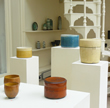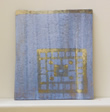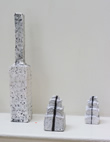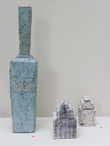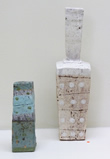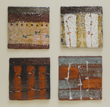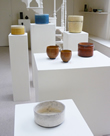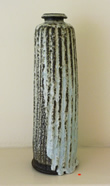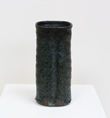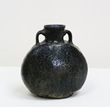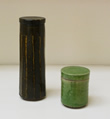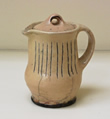THREE DANISH POTTERS:
ANNE FLØCHE, ULLA HANSEN & INGER ROKKJÆR
24 March - 28 April 2010
Anne Fløche (b. 1952)

"Anne Fløche's work has a particular quality of movement. Her pots, mainly big dishes, bowls and bottles, are beautifully drawn, a freely expressive hand seen in bold and broad definition of form, depth and texture of glaze and an economic brush. These crawling pigments and lyrically abstracted motifs (such as coastal wading birds, fish and blossom trees) enrich the poetic charge of these pots and reveal a sensitive, gently humorous eye for the shapes and characters of the natural world. Her inspiration is markedly Eastern, but these objects relate as well to the ceramic history of Northern Europe, the Mediterranean, Turkey and Morocco. The result though is highly individual, a pottery of floating images - breezy evocations of time and place."
Written by David Whiting for Anne Fløche's exhibition at Galerie Besson in 2000
Ulla Hansen (b. 1953)
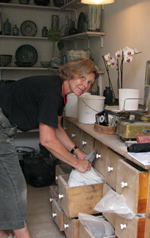
"My preferred shapes and forms are classical inspired by ancient, islamic and asian arts and crafts.
My clay is the very sandy red clay from the South of Denmark. I mix and clean it myself and store it for more than a year before I use it. In my large trays and bowls I add stoneware clay.
I throw all my pieces on the wheel, after which I pull or draw lobes, make facets, cut, shape and/or stamp bands. Most pieces have been given a slip - often several layers. I'm very fascinated by glazes and the hues derived from the slips and the ash and clay glazes. I use ash and clay glazes and the hues are derived from the slips : many types of different ashes like from beechwood, straw, oak yield different hues and colors. I much prefer light blue and green, turquoise colors."
Ulla Hansen
Inger Rokkjaer (1933-2008)
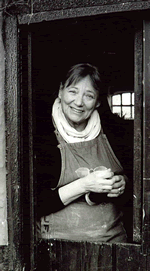
"Inger Rokkjaer was one of the finest Danish potters of her generation. She found a language that was simple, clear and confident – cylinders, bowls and lidded jars that were restrained but full of their maker’s inimitable spirit. Her concentrated forms, thrown on the wheel, perhaps carved or faceted, sometimes embellished with incised and impressed decoration and then glazed in quietly luminous or earthier colours, had a rich raku depth and variation. There was a marked concision, a way of saying so much with a remarkable economy of means.
Yet what springs to mind first in thinking about Inger, was the force and vividness of her personality. She was so engaged. Her animated face and conversation, those warm affectionate eyes and that broad smile made her a very singular person – a charisma that simply lit up the room. It was this openness and generosity, this embracing energy and passion that Inger brought to her life and pots, and touched everyone who knew her."
David Whiting, 15 December 2008
* The exhibition also includes a small number of works by Gutte Eriksen, who taught all three of the artists above. *
Gutte Eriksen (1918-2008)
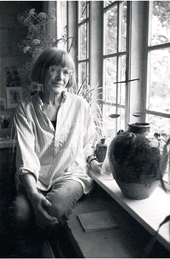
Gutte Eriksen was born in 1918 in Rødby on the island of Lolland in Denmark. She studied at the Kunsthåndvaerkskolen in Copenhagen from 1936 to 1939. In 1941 she set up a studio with two other artists in Hareskov, loving to her own studio in Kastrup the following year. From 1953 she worked in her studio at Karlsminde. In 1948 she spent two months working with Bernard Leach in St Ives, and later that year she worked in France with Pierre Lion and Vassil Ivanoff. She visited Japan to work with potters there in 1970 and again in 1973.
Gutte Eriksen influenced a generation of Danish potters with both her work and teaching. She taught at the Jutland Academy of Fine Arts, Arhus, in 1968-71, 1973-4 and 1976-8. Her public commissions include fountains in Østre Landsret and Holstebro. In 1972 she won the Gold Medal in Faenza and in 1985 she was awarded the Thorvald Bindesbøll Medal of the Danish Academy of Fine Arts. In 2000 she was given The Prince Eugen Medal, awarded by the Swedish Royal Family for outstanding artistic achievement. She was honoured with a major retrospective at the Vejen Kunstmuseum in 2001. Gutte Eriksen died in 2008.

